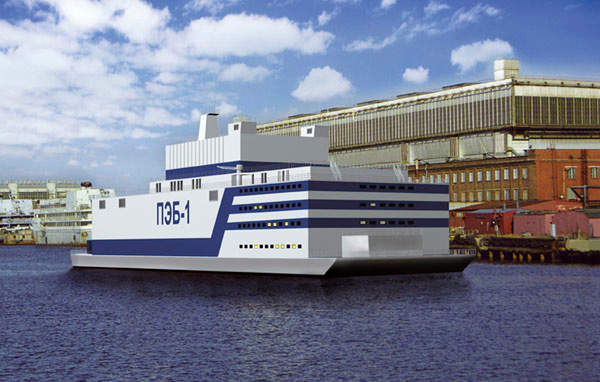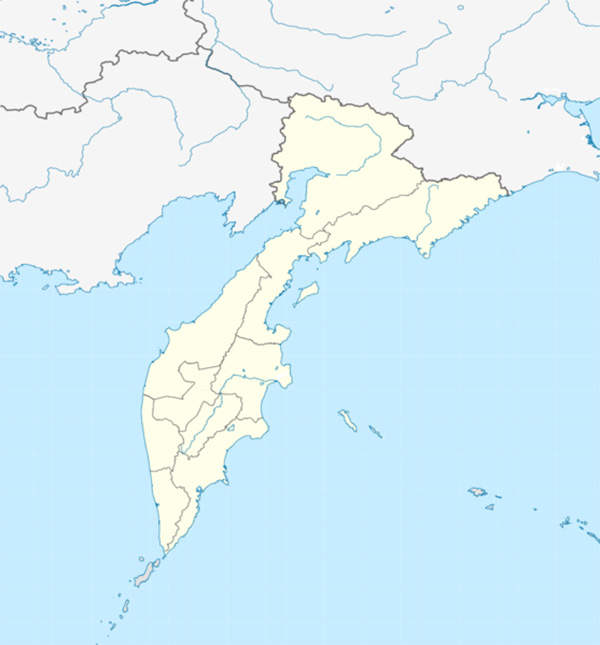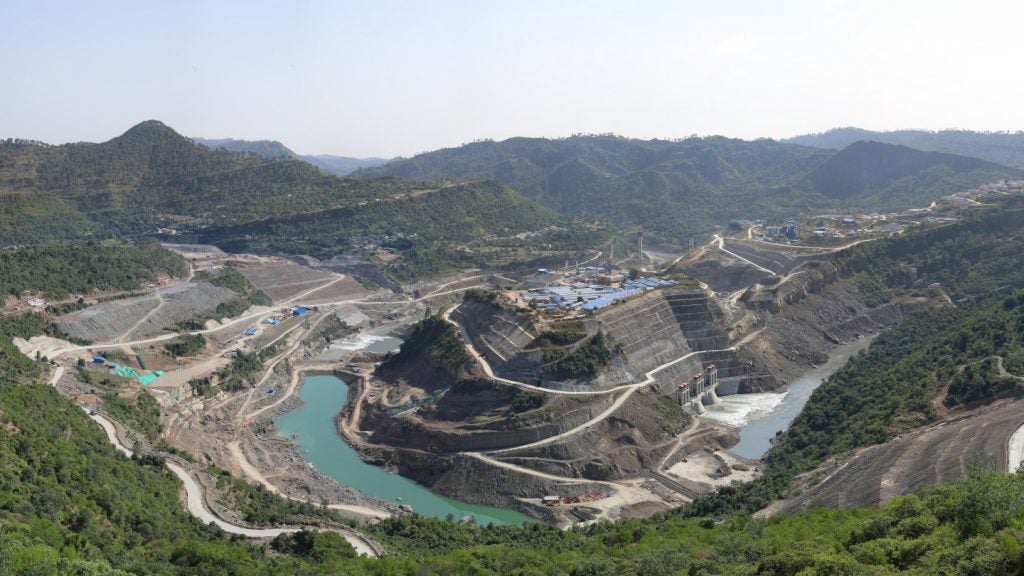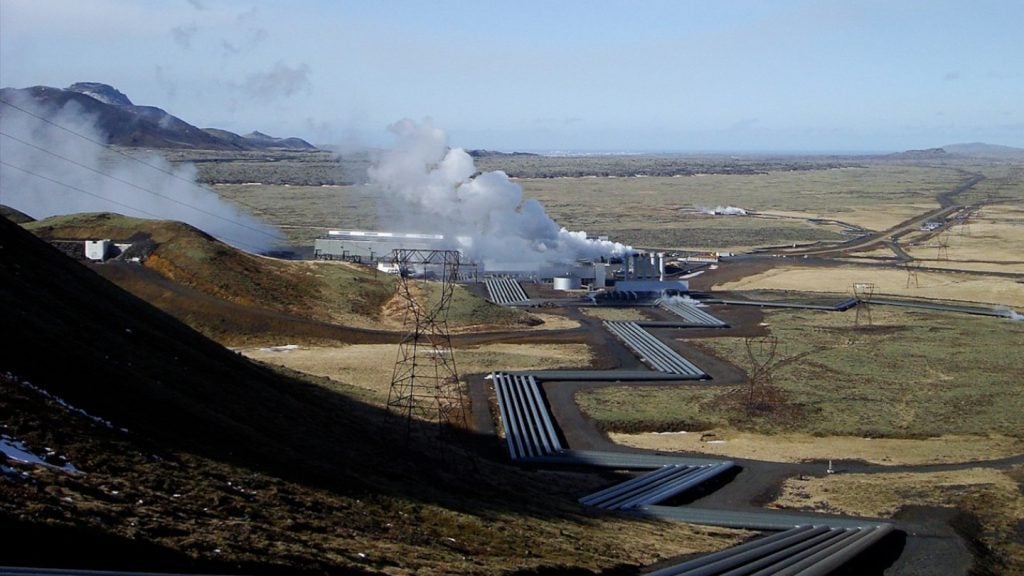The 70MW Akademik Lomonosov floating nuclear co-generation plant is located in the town of Vilyuchinsk, in the Kamchatka region of Far East Russia.
The barge was named after a famous academician, Mikhail Lomonosov.
State-owned atomic energy corporation Rosatom owns the nuclear power plant.
The foundations for the project were laid on 15 April 2007. Construction of the barge was initially carried out at the Sevmash submarine-building plant in Severodvinsk. In August 2008, the construction site was shifted from Sevmash to the Baltic shipyard in Saint Petersburg.
Akademik Lomonosov was launched on 30 June 2010. It is Russia’s first floating nuclear power plant. The two nuclear reactors were installed on the barge in October 2013.
The floating power plant reached Murmansk, Russia, to receive nuclear fuel for the first time in May 2018 and the fuelling of the two reactors was completed by October.
In December the same year, the reactor unit 1 was turned on at 10% of its capacity.
In June 2019, Rosenergoatom, a subsidiary of Rosatom, secured a licence from the Federal Environmental, Industrial and Nuclear Supervision Service (Rostechnadzor) to operate the floating nuclear plant for ten years, until 2029.
Akademik Lomonosov arrived at its permanent location in the port of Pevek, Chukotka, in September 2019. It started generating electricity and was connected to the isolated Chaun-Bilibino electricity grid in December 2019. The floating power plant was fully commissioned in May 2020. It is expected to generate enough power to serve about 200,000 people and have a lifespan of 40 years.
Features of Russia’s floating power plant
Akademik Lomonosov is an autonomous power facility, manufactured as a non-self-propelled vessel. It is 140m long, 30m wide and 10m high. It has a draught of 5.56m. Its displacement is 21,500t and it has a crew of 70.
The floating vessel is equipped with a power unit featuring two 35MW KLT-40C nuclear reactors, which can produce 70MW of electricity or 300MW of heat, as well as two steam-driven turbine units. It can also be converted into a desalination plant with a capacity to produce 240,000m³ of fresh water a day.
The project features offshore and onshore facilities to transfer the energy and power generated from the plant.
The energy and heat generated by the offshore units are transmitted onshore, while the onshore facilities further transfer the heat and power to the grid. The project is estimated to save 200,000t of coal and 100,000t of fuel oil a year.
The offshore vessel accommodates the reactors, steam turbine plants and storage facilities that house fresh and nuclear fuel assemblies, as well as solid and liquid radioactive waste.
The plant will undergo servicing and maintenance at the Baltic shipyard every 12 years. It will be refuelled every three years.
Akademik Lomonosov nuclear plant reactor details
The KLT-40C is a modular water reactor that works as a steam generating station. The reactor is comprised of reactor proper, steam generators, reactor coolant pumps, heat exchangers, pressurisers, valves and pipelines used for various purposes.
The reactors were delivered in 2009, the first in May and the second in August. Each reactor is enclosed in a steel hermetic containment vessel to withstand the pressure.
The nuclear waste is discarded carefully to avoid radiation during the production and generation of energy.
Contractors for the Akademik Lomonosov vessel
Power equipment company OKBM Afrikantov was responsible for the design of the reactors, manufacture and supply of the pumps, fuel handling equipment and auxiliary equipment. Nizhniy Novgorod Research and Development Institute assembled the reactors in the power plant.
The reactor vessels were supplied by Izhorskiye Zavody, a Russian machine building company.
Kaluga Turbine Works supplied the plant’s turbo-generators and nuclear fuel fabricator TVEL supplied the nuclear fuel for the plant.
Altogether 136 companies were involved as main and subcontractors during the engineering and production stages of the plant.
Local environmental impact
Deployment of the barge raised many questions about the environmental risks involved. The main concern is that the vessel may produce large amounts of radioactive steam that could have adverse effects on nearby population centres.
Seismic activity frequently occurs in the Kamchatka region, where Akademik Lomonsov is deployed. An earthquake-triggered tsunami could destroy an onshore floating nuclear power plant and result in the release of radioactive material and fuel from nuclear waste.
According to environmental groups, floating nuclear power plants are more exposed to accidents than onshore power stations and also pose a threat to marine habitats.
However, Russia has 50 years of experience in safeguarding nuclear-powered icebreakers, which are specifically built for the Arctic oceans.












